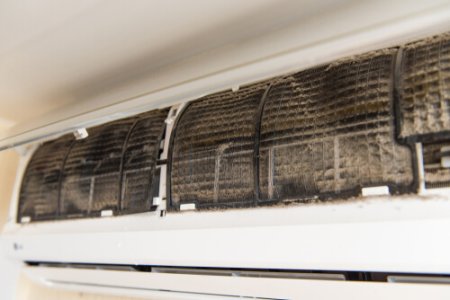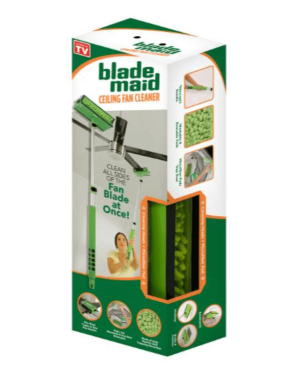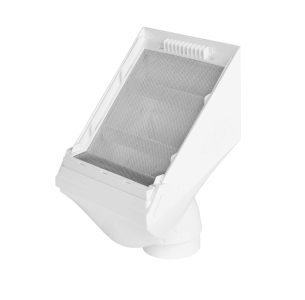Tech Talk with Dr Al: Home Maintenance for Seniors
- Replies 5
Note from the Editor:
This article was kindly written for the SDC by member Alan G, ‘The Tech Guy’.
Most of us are aware of the importance of ‘preventative maintenance’ (PM), but it’s not only applicable to machines; it applies to our homes as well.
My wife and I live in Queensland and have two air conditioners. One is a ‘ducted’ system for the bulk of the house, while the other is the standard ‘split system’ that is used for an office built onto the house. We have a lot of ‘geckos’ in the summer – I think in WA, we used to call them skinks, but essentially, they’re little wiggly lizards that tend to like warm places. They don’t really bother us unless they come into the house, which isn’t that often.
Our ducted system decided not to work a few months ago, and we had to get a technician out to fix it. A little gecko had decided to ‘fry’ itself on the circuit board in the outside unit, and the main board had to be replaced. K-Ching! $1200 plus! The technician sprayed the board with Lanolin spray (a few squirts that cost us twice as much as a whole tin!) because it helped to keep the little blighters away, so he said. He also suggested mothballs. I already knew about this, so I used them in key places in the house. Geckos don’t like the smell, apparently. I was able to buy a double packet of mothballs in rectangular plastic holders for about $3 at the local Bargain Shop and install them in both outside units near the circuit boards after lifting the top cover. (It’s only held on by about six screws in each case.) If I’d known about the possibility of a fry-up beforehand, I would have saved enough for several nights away in a posh hotel!
This leads me into talking about other areas that would benefit from PM. These include inside-unit air-con filters, outside air-con units, return-air duct filters (for ducted systems), smoke detector batteries, overhead fan blades, and roof gutters. There are others, such as chest-freezer defrosting and sink grease-trap cleaning, but these are usually carried out on an ‘as-needed’ basis.
Important: Before anything you do on air conditioners regarding ‘preventative maintenance’ (PM), you need to switch off the unit by using the large switch usually mounted near the outside duct or switch the circuit breaker OFF in the electricity box. The air-con is always labelled and has its own breaker.
Air Conditioner Filters (Inside Units): For inside units, you’ll need to climb on a step stool or ladder and open the front cover of the unit. It is designed to be pushed up and stays there. The filter unclips from the front and can then slide out easily. There are usually two filters, side-by-side, and one or both may contain a bacteria filter. Wash and dry the filters, and before replacing them, use a vacuum cleaner around the inside of the unit. If you have one, it’s a good idea to use a small (but powerful) blower to get rid of any dust that hasn’t shifted.
Air Conditioner Filters (Outside Units): Sometimes, the grill of an outside unit of a split-system air-con may become blocked with leaves. Use an air blower to get rid of them, but if there are leaves still stuck inside, remove the cover. The screws holding it are usually Philips heads, and you may need a stubby screwdriver to remove the screws near the wall. Once the cover is removed, you will be able to see the leaves that need removing. If you have noticed any small geckos or skinks around the area, now is a good time to place mothballs somewhere near the electronics. Check the tubes running from the unit to the duct, and if the copper tubing is exposed, buy some foam insulating tubing (Bunnings, etc.) and carefully cut it down one side using a utility knife. Place the foam tubing over the exposed copper pipe and use duct tape to hold it in place if necessary.

Return Air Duct Filter: If you have a ducted system, the return air duct filter will need cleaning, probably once a year. The cover is fastened in different ways depending upon the manufacturer. There is usually a small thumb-screw that needs to be loosened until the cover/filter swings down. Remove the filter encasement and wash it gently. When it is thoroughly dry, replace it after running a vacuum cleaner over the ceiling grill to remove dust and debris.
Smoke Detector Batteries: Depending upon the type used in your home, you may need to replace the 9v battery in each of your smoke detectors. The cover/smoke detector body usually slides off in the direction of arrows printed on it. Buy good alkaline batteries or those that are specifically marked for smoke detectors. Bargain basement batteries are a false economy, after all, it’s your home you’re protecting. I suggest carrying this out every year, on some easy to remember anniversary.
If any of the above is unclear, head to the Bunnings website and ask: ‘How to change a smoke alarm battery’ or watch one of the helpful videos below.
Overhead fan blades: Fan blades get dusty and it is a very good idea to clean them at least once every six months. You can use a step ladder, as I do, and clean them all with a damp cloth, or you can buy a purpose-made cloth that slides over the blades to clean them. They are available from Temu at a very low price or from Australia Post, to name a few.
Blade Maid: Fan Blade Cleaner $39.95 @ Australia Post
Roof Gutters: I strongly suggest that if you have nearby trees, even if you’re certain a bushfire would never approach your home, that you install a gutter guard to prevent blown leaves from clogging your drains. I also suggest that you investigate the possibility of using a ‘diverter’ so that any leaves don’t get washed down the pipes from the gutter.
Failing that, you should clean out your gutters every year – not an easy job. If you have a pressure cleaner, you can buy an adapter (on some models) that is specifically designed to clean gutters while you stay on the ground.
(Incidentally, I use a pressure cleaner to clean our concrete paths and brick walls every year and, more recently, to wash the car – it saves crouching down to clean the wheels, for instance. My back usually reminds me it doesn’t like crouching!)
Rain Harvesting 90mm Leaf Beater Rain Head $35 @ Bunnings
Other Maintenance:
Freezers: Most chest freezers are not ‘auto-defrost’, so they need to be cleaned. Use a plastic scraper and scoop the ice into a bucket.
Pipes: When the water from the sink starts to drain slowly, it’s time to clear the grease from the pipes. Use white vinegar and bicarbonate of soda or simply several kettles of very hot water.
The final word:
Look after your home, and it will look after you!
About the author: Having spent three years living in Australia in his youth, Alan returned to Australia in 1969 with his wife and young child. Holding a Bachelor of Engineering degree and a Doctor of Science Education degree, Alan has experience in flight simulations, Einsteinian physics, and inventing an ‘eye blink’ device that allows cerebral palsy patients to communicate. He even took a turn at acting, starring in a TV advert and landing supporting and lead roles in his local dramatic society plays. His short stories have been published in WA’s The Gingin Buzz for ten years, and his novel The Magic Hourglass is a work in progress. He and his wife have a lovely life in Brisbane and regularly visit their two children in Sydney’s West. You can read Alan’s full-length bio here.
From the Editor:
What preventative maintenance do you do around the house? While this is a little left of field, I squeegee my shower after use. It helps make cleaning the glass easier and prevents a quick build-up of mould in the room.
We were only able to create this content because of the financial support of SDC Rewards members. If you'd like to see more of this (and a lot fewer ads!), please consider supporting us and signing up for SDC Rewards today—it starts at just $5.99 per month.
This article was kindly written for the SDC by member Alan G, ‘The Tech Guy’.
Most of us are aware of the importance of ‘preventative maintenance’ (PM), but it’s not only applicable to machines; it applies to our homes as well.
My wife and I live in Queensland and have two air conditioners. One is a ‘ducted’ system for the bulk of the house, while the other is the standard ‘split system’ that is used for an office built onto the house. We have a lot of ‘geckos’ in the summer – I think in WA, we used to call them skinks, but essentially, they’re little wiggly lizards that tend to like warm places. They don’t really bother us unless they come into the house, which isn’t that often.
Our ducted system decided not to work a few months ago, and we had to get a technician out to fix it. A little gecko had decided to ‘fry’ itself on the circuit board in the outside unit, and the main board had to be replaced. K-Ching! $1200 plus! The technician sprayed the board with Lanolin spray (a few squirts that cost us twice as much as a whole tin!) because it helped to keep the little blighters away, so he said. He also suggested mothballs. I already knew about this, so I used them in key places in the house. Geckos don’t like the smell, apparently. I was able to buy a double packet of mothballs in rectangular plastic holders for about $3 at the local Bargain Shop and install them in both outside units near the circuit boards after lifting the top cover. (It’s only held on by about six screws in each case.) If I’d known about the possibility of a fry-up beforehand, I would have saved enough for several nights away in a posh hotel!
This leads me into talking about other areas that would benefit from PM. These include inside-unit air-con filters, outside air-con units, return-air duct filters (for ducted systems), smoke detector batteries, overhead fan blades, and roof gutters. There are others, such as chest-freezer defrosting and sink grease-trap cleaning, but these are usually carried out on an ‘as-needed’ basis.
Important: Before anything you do on air conditioners regarding ‘preventative maintenance’ (PM), you need to switch off the unit by using the large switch usually mounted near the outside duct or switch the circuit breaker OFF in the electricity box. The air-con is always labelled and has its own breaker.
Air Conditioner Filters (Inside Units): For inside units, you’ll need to climb on a step stool or ladder and open the front cover of the unit. It is designed to be pushed up and stays there. The filter unclips from the front and can then slide out easily. There are usually two filters, side-by-side, and one or both may contain a bacteria filter. Wash and dry the filters, and before replacing them, use a vacuum cleaner around the inside of the unit. If you have one, it’s a good idea to use a small (but powerful) blower to get rid of any dust that hasn’t shifted.
Air Conditioner Filters (Outside Units): Sometimes, the grill of an outside unit of a split-system air-con may become blocked with leaves. Use an air blower to get rid of them, but if there are leaves still stuck inside, remove the cover. The screws holding it are usually Philips heads, and you may need a stubby screwdriver to remove the screws near the wall. Once the cover is removed, you will be able to see the leaves that need removing. If you have noticed any small geckos or skinks around the area, now is a good time to place mothballs somewhere near the electronics. Check the tubes running from the unit to the duct, and if the copper tubing is exposed, buy some foam insulating tubing (Bunnings, etc.) and carefully cut it down one side using a utility knife. Place the foam tubing over the exposed copper pipe and use duct tape to hold it in place if necessary.
Tip
Be cautious with the mothballs – they are poisonous and shouldn’t be ingested. Keep them away from pets and (grand)children.
Return Air Duct Filter: If you have a ducted system, the return air duct filter will need cleaning, probably once a year. The cover is fastened in different ways depending upon the manufacturer. There is usually a small thumb-screw that needs to be loosened until the cover/filter swings down. Remove the filter encasement and wash it gently. When it is thoroughly dry, replace it after running a vacuum cleaner over the ceiling grill to remove dust and debris.
Smoke Detector Batteries: Depending upon the type used in your home, you may need to replace the 9v battery in each of your smoke detectors. The cover/smoke detector body usually slides off in the direction of arrows printed on it. Buy good alkaline batteries or those that are specifically marked for smoke detectors. Bargain basement batteries are a false economy, after all, it’s your home you’re protecting. I suggest carrying this out every year, on some easy to remember anniversary.
If any of the above is unclear, head to the Bunnings website and ask: ‘How to change a smoke alarm battery’ or watch one of the helpful videos below.
How to Install a Smoke Alarm - Bunnings Warehouse
How To Change A Smoke Alarm Battery - DIY At Bunnings
How To Change A Smoke Alarm Battery - DIY At Bunnings
Overhead fan blades: Fan blades get dusty and it is a very good idea to clean them at least once every six months. You can use a step ladder, as I do, and clean them all with a damp cloth, or you can buy a purpose-made cloth that slides over the blades to clean them. They are available from Temu at a very low price or from Australia Post, to name a few.
Blade Maid: Fan Blade Cleaner $39.95 @ Australia Post
Roof Gutters: I strongly suggest that if you have nearby trees, even if you’re certain a bushfire would never approach your home, that you install a gutter guard to prevent blown leaves from clogging your drains. I also suggest that you investigate the possibility of using a ‘diverter’ so that any leaves don’t get washed down the pipes from the gutter.
Failing that, you should clean out your gutters every year – not an easy job. If you have a pressure cleaner, you can buy an adapter (on some models) that is specifically designed to clean gutters while you stay on the ground.
(Incidentally, I use a pressure cleaner to clean our concrete paths and brick walls every year and, more recently, to wash the car – it saves crouching down to clean the wheels, for instance. My back usually reminds me it doesn’t like crouching!)
Rain Harvesting 90mm Leaf Beater Rain Head $35 @ Bunnings
Other Maintenance:
Freezers: Most chest freezers are not ‘auto-defrost’, so they need to be cleaned. Use a plastic scraper and scoop the ice into a bucket.
Pipes: When the water from the sink starts to drain slowly, it’s time to clear the grease from the pipes. Use white vinegar and bicarbonate of soda or simply several kettles of very hot water.
The final word:
Look after your home, and it will look after you!
About the author: Having spent three years living in Australia in his youth, Alan returned to Australia in 1969 with his wife and young child. Holding a Bachelor of Engineering degree and a Doctor of Science Education degree, Alan has experience in flight simulations, Einsteinian physics, and inventing an ‘eye blink’ device that allows cerebral palsy patients to communicate. He even took a turn at acting, starring in a TV advert and landing supporting and lead roles in his local dramatic society plays. His short stories have been published in WA’s The Gingin Buzz for ten years, and his novel The Magic Hourglass is a work in progress. He and his wife have a lovely life in Brisbane and regularly visit their two children in Sydney’s West. You can read Alan’s full-length bio here.
From the Editor:
What preventative maintenance do you do around the house? While this is a little left of field, I squeegee my shower after use. It helps make cleaning the glass easier and prevents a quick build-up of mould in the room.
We were only able to create this content because of the financial support of SDC Rewards members. If you'd like to see more of this (and a lot fewer ads!), please consider supporting us and signing up for SDC Rewards today—it starts at just $5.99 per month.












